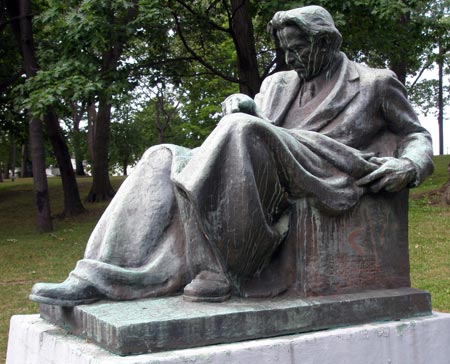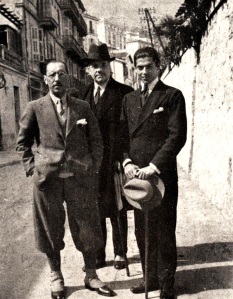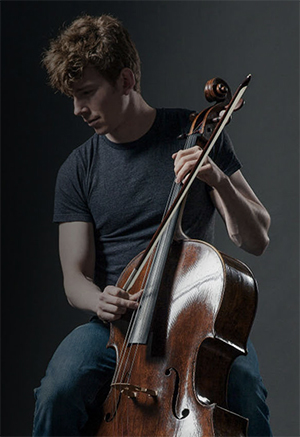by Daniel Hathaway
Youngstown State University Dana School of Music has announced that its student Ryan Lamb has won the gold medal at the highly competitive Leonard Falcone International Euphonium and Tuba Festival, held from August 9-12 at the Blue Lake Fine Arts Camp in Twin Lake, Michigan. Read the press release here.
INTERESTING READS:
The New York Times has published a story by Pam Belluck about cellist Joshua Roman (pictured) and his continuing struggle to recover from Long Covid. A native of Oklahoma City, Roman studied at the Cleveland Institute of Music with Richard Aaron and Desmond Hoebig, and was appointed principal cello of the Seattle Symphony at the age of 22.
Princeton University musicology professor Simon Morrison challenges long-standing notions about Pyotr Tchaikovsky in his Guardian article, Tchaikovsky was not tragic but had a Monty Python sense of humor.
“His biography has been shamefully distorted by scholars — almost in a way you could say is homophobic — because they represent him as a tortured gay man who was unhappy in his life and his love, and his music is thus reduced to the sound of suffering.
“But he wasn’t any of those things. He was successful, had a lot of love from family and friends, wealth, boyfriends, girlfriends. He really had quite a fabulous life.”
TODAY’S ALMANAC:
by Jarrett Hoffman

Hear “The Fiddler” from Enescu’s Impressions d’enfance in a solo recital by violinist Yura Lee at Transformer Station in 2016 as part of ChamberFest Cleveland. Marvel at the music, her playing, the dramatic canvases behind her, and the sight of a crowd of people packed into a building, happily.
by Mike Telin

Although Diaghilev composed his first work at age 15 and later studied music with Nikolai Rimsky-Korsakov, it was his passion for promoting Russian art that would lead to his founding of The Ballets Russes. From 1909 to 1929 the Paris-based company toured across Europe as well as North and South America. Interestingly, the company never performed in Russia. Still, because of its innovative collaborations with important choreographers, composers, designers, and dancers, The Ballets Russes is heralded as the most important company of the 20th century.
Together with the Company’s artistic director Léon Bakst, Diaghilev spawned a new style of ballet designed to be appealing to a general audience, rather than just the upper class. Of the company’s unique style, fashion designer Coco Chanel is reported to have famously said that “Diaghilev invented Russia for foreigners.”
During the company’s history, Diaghilev staged many works by Rimsky-Korsakov and commissioned ballet scores from a who’s-who list of composers including Nikolai Tcherepnin, Claude Debussy (Jeux, 1913), Maurice Ravel (Daphnis et Chloé, 1912), Erik Satie (Parade, 1917), Manuel de Falla (El Sombrero de Tres Picos, 1917), Richard Strauss (Josephslegende, 1914), Sergei Prokofiev (Le pas d’acier, 1926 and The Prodigal Son, 1929), Ottorino Respighi (La Boutique fantasque, 1919), and Francis Poulenc (Les biches, 1923).
Diaghilev’s most celebrated collaborations were with Igor Stravinsky, from whom he commissioned ballet scores for The Firebird and Petrushka (1911) and The Rite of Spring (1913). Diaghilev and Stravinsky also collaborated on Les noces (1923) and Pulcinella (1920), for which Pablo Picasso designed the sets and costumes.
Click here to watch a performance of Debussey’s Jeux with choreography by Nijinsky.




